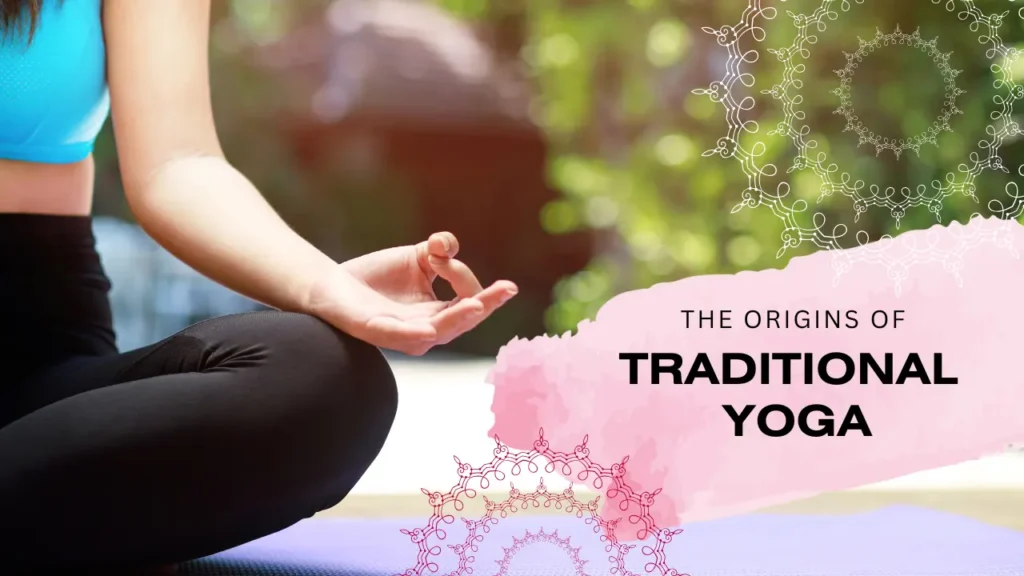Traditional Yoga, an ancient practice rooted in India’s rich cultural tapestry, offers a holistic approach to harmonizing the mind, body and spirit. This article delves into the origins, practices and benefits of Traditional Yoga, shedding light on its enduring significance in today’s world.
Embark on a journey through the rich history and profound practices of traditional yoga. This comprehensive guide delves into its ancient origins, explores core techniques like asanas, pranayama and meditation and highlights the myriad benefits for physical health, mental clarity and spiritual growth. Whether you’re a beginner or seeking to deepen your practice, discover how this timeless discipline fosters balance, harmony and holistic well-being in the modern world.
Origins of Traditional Yoga
Yoga originates from the word “yuj” in Sanskrit which means to unite or integrate something. Its first references can be found from the Vedas or ancient sacred texts of India, which are believed to date back to 1000 BCE. The texts talk about ascetics known as Munis or Keśins who practiced breath control and meditation, the steps towards Step traditional Yoga. The philosophical components such as self-realization and meditative practices were included in Traditional Yoga during the timeframe of the 9th to 6th century BCE, known as the Upanishads.
Core Practices of Traditional Yoga
Traditional Yoga includes various practices aimed towards achieving both the physical and spiritual self. The core aspects are as follows:
1. Asanas (Postures)
These were meant to enable the body to meditate for a long time. Asanas now focus on the aspecifics of flexible health. Each pose aims to aid in detox, muscle realignment, strengthening, and flexibility improvement.
2. Pranayama (Breath Control)
These are controlling techniques for Prana, or the life giving force of an organism which is breath in this sense. The goals for these practices are focused on relaxing the mind and increasing body energy levels, eventually leading towards helping in meditation.
3. Dhyana (Meditation)
Meditation plays an important role in Traditional Yoga by promoting awareness and focus. The goal of regular meditation practice is to achieve a state of tranquility and awareness that contributes towards self-realization.
4. Yamas and Niyamas (Ethical Disciplines)
These set of principles concern ethics of self relations and self relations with other people. Yamas includes having no violence and being truthful, while Niyamas emphasize self-discipline and observing the spiritual form the foundation of ethics in Traditional Yoga.
Benefits of Practicing Traditional Yoga
Engaging in this time-honored discipline offers a multitude of benefits that encompass physical, mental and emotional well-being:
1. Pysical Health
Regular practice of yoga increases the body’s flexibility, strength and balance. People who practice Yoga have been shown to report improvement in muscle strength, endurance and cardiovascular health.
2. Mental Clarity and Emotional Balance
Through the practice of Yoga, self-awareness and breath control, stress and anxious feelings are mitigated. Enhanced mental clarity, emotional control and calmness are some of the other benefits practitioners have.
4. Spiritual Growth
yoga promotes self-awareness and spiritual growth by integrating ethical disciplines, meditation, reflection, and breathing techniques to establish a deeper connection with oneself and the surrounding world.
Traditional Yoga in the Modern World
Even with modern contemporary yoga styles emerging, Traditional Yoga continues to hold its relevance. It deals with life’s complexities and provides means to manage stress, improve health, and attain inner peace, which are essential in today’s world. A multitude of practitioners looking to reconnect with yoga’s authentic roots and holistic benefits seek out Traditional Yoga.
Conclusion
Classical Yoga is a practice that transcends time and culture, remaining relevant throughout the years. By understanding its origin, core practices, and advantages, one can start a journey toward achieving holistic self-discovery and well-being. New beginners, or those wanting to delve deeper into their practice, will find that this ancient discipline offers the ability to achieve balance and harmony in life.






